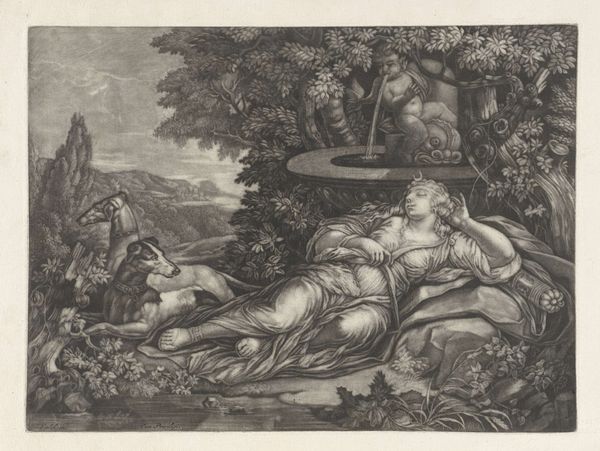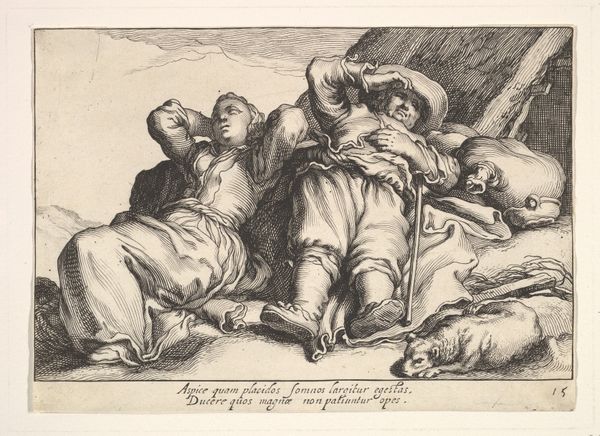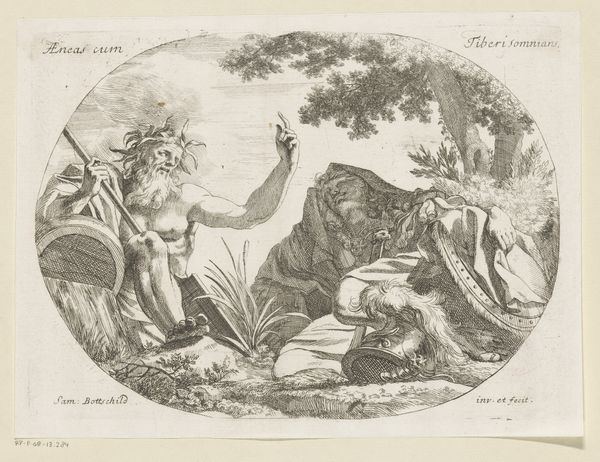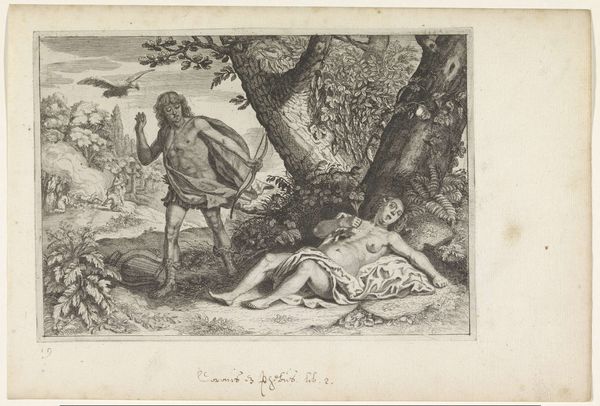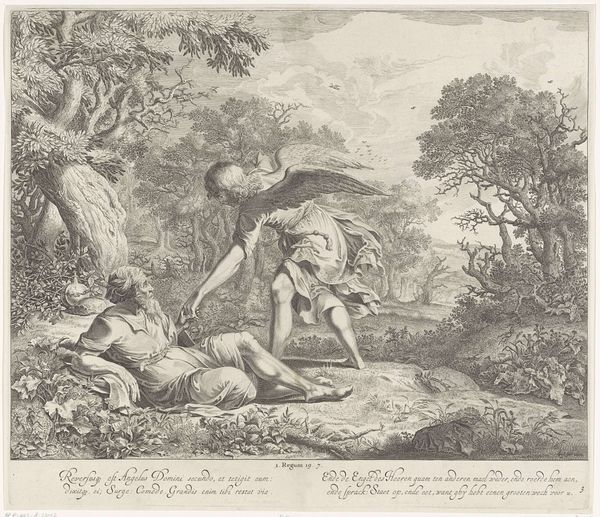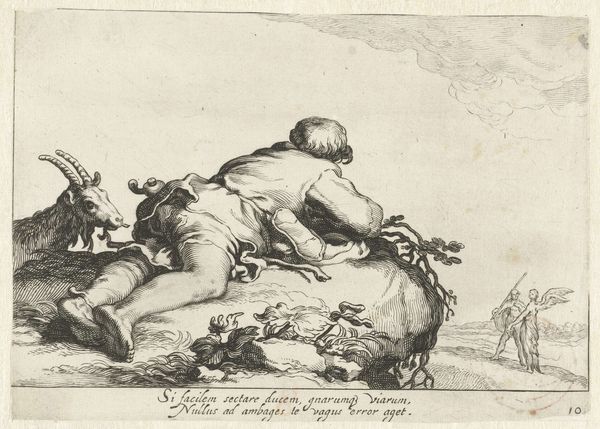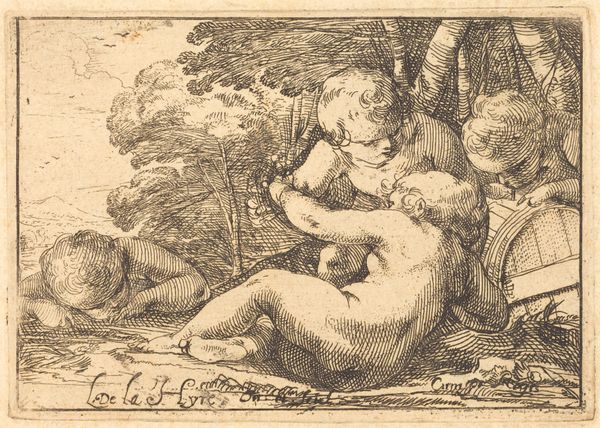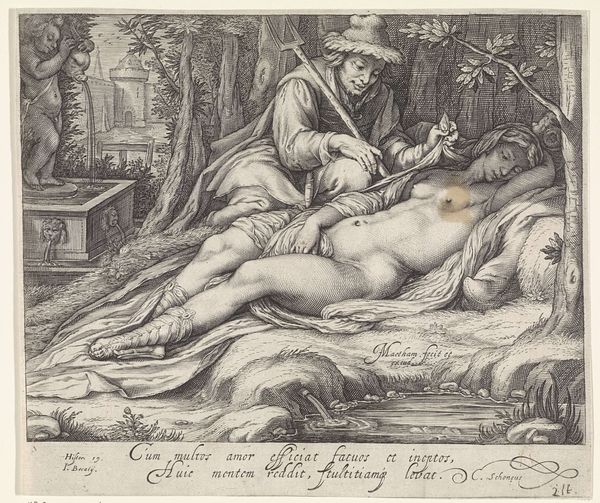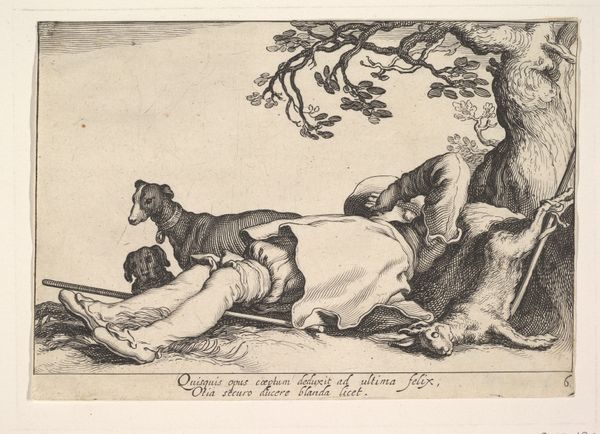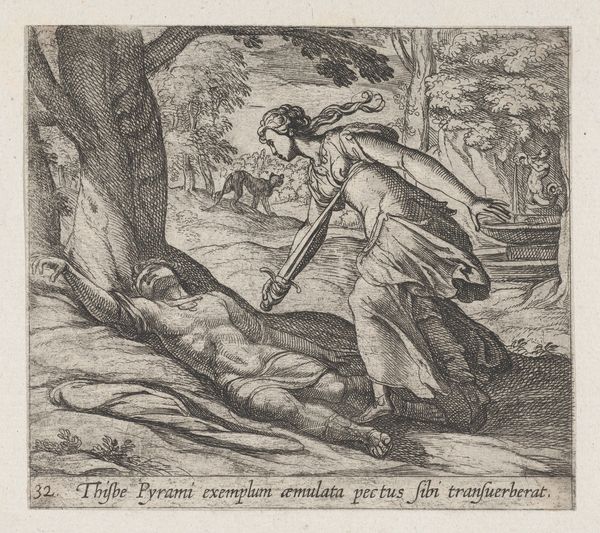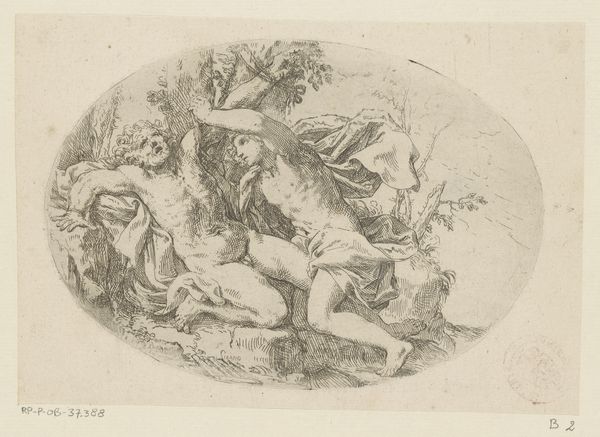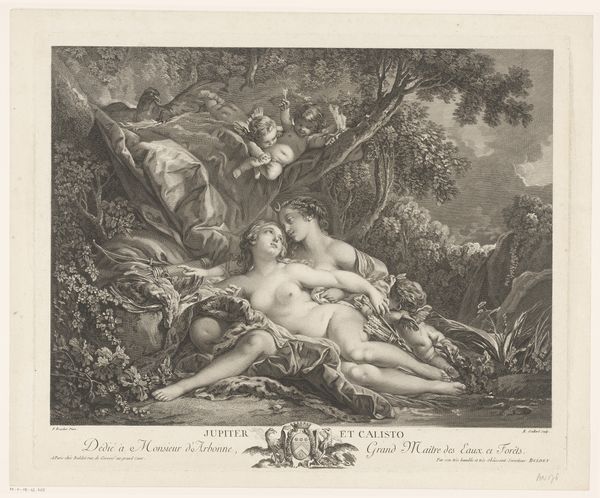
drawing, print, engraving
#
drawing
#
baroque
# print
#
landscape
#
figuration
#
history-painting
#
engraving
Dimensions: sheet: 4 1/4 x 5 7/8 in. (10.8 x 15 cm)
Copyright: Public Domain
Curator: Here we have Cornelis Bloemaert's engraving, "Pleasures of Occupation," which he created sometime between 1610 and 1684. Editor: Wow, this scene…it feels melancholic, almost vulnerable. Like stumbling upon a secret moment. The sleeping figure exudes such calm, contrasted by the shadowy characters looming nearby. Curator: It's a piece ripe with interpretations. Bloemaert was working within a context where prints served didactic purposes, and the inscription at the bottom translates roughly to "Despise riches; let the wise scorn deceit, which often hands over their master to sad death." So, there is perhaps an intended moralizing message about the fleeting nature of earthly pleasures. Editor: True, that inscription does throw a heavier shade onto things. But there's something visually seductive about the way the light falls on the reclining figure, this golden boy carelessly strewn across the earth while intrigue stirs around him. It reminds me of a Caravaggio, but miniaturized and far more insidious. Is there a particular story here, do we know? Curator: We can't say with absolute certainty what narrative Bloemaert intended to depict, though such scenes of ambush and vulnerability were fairly common tropes. We see them throughout history painting, exploring themes of betrayal, danger, or the fragility of power. There is this real sense of theater even in this small engraving, with costuming playing a key role. Editor: "Theater," I love that. These armed figures almost seem like actors waiting for their cue. It's this suspended moment that really captivates, knowing that something wicked this way comes but not yet seeing it unfold. All that ornate detailing on the armor, the weapons... is that supposed to heighten the drama? It's such exquisite craft, too, when you think of the time involved to make such a tiny drawing. Curator: Indeed. That attention to detail was part and parcel of the printmaking tradition; these images were often meant for close inspection. They were also crucial in disseminating visual culture, allowing ideas and styles to circulate widely. Editor: So much narrative, all squeezed into such a tiny space. Makes you wonder what tales such artworks whispered from walls for hundreds of years... it still sends chills. Curator: Exactly, art’s impact resonates through time.
Comments
No comments
Be the first to comment and join the conversation on the ultimate creative platform.
